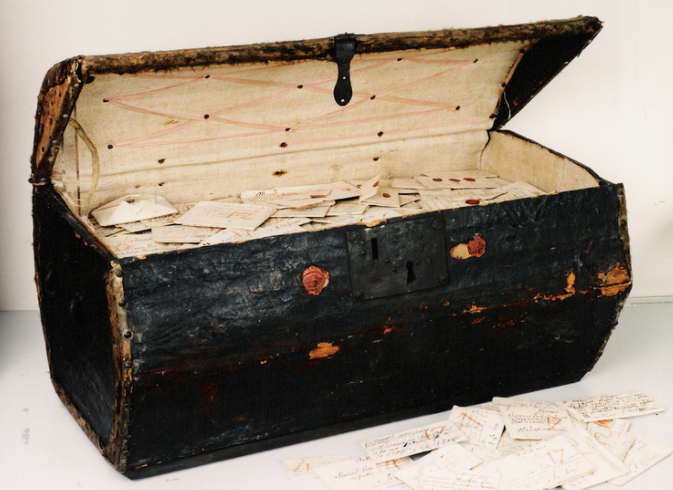dead letters
lacan said a letter always arrives at its destination. i've been thinking about this for a long time — especially in the years when i was an artist. in australia in the late eighties i sent many letters to dead early modernists in europe at their last known addresses in paris (tzara, breton), hanover (schwitters), zurich (arp) etc. some of the letters came back to me with impressive stamps and markings and some of them didn't. unsurprisingly the germans and the swiss were most likely to return the letters but none ever came back from paris.

“In 1926, a seventeenth-century trunk of letters was bequeathed to the Museum voor Communicatie in The Hague. The trunk belonged to one of the most active postmaster and post mistress of the day, Simon and Marie de Brienne, a couple at the heart of European communication networks. The chest contains an extraordinary archive: 2600 locked letters❊ sent from all over Europe, none of which were ever delivered. In the seventeenth century, the recipient also paid postal and delivery charges, but if the addressee was deceased, absent, or uninterested, no fees could be collected. Postmasters usually destroyed such “dead letters”, but the Briennes preserved them, hoping that someone would retrieve the letters – and pay the postage. The letters are uncensored, unedited, and 600 of them even remain unopened. The archive itself has remained virtually untouched by historians until it was recently rediscovered. The Signed, Sealed, and Undelivered group, an international and interdisciplinary team of researchers has now begun a process of preservation, digitization, transcription, editing, and identification of letterlocking formats and categories that will reveal its secrets for the first time – even, we hope, those of the unopened letters.” (SSU)
❊ Letterlocking "refers to the technology of folding and securing an epistolary writing substrate to function as its own envelope – a vital communications technology before the invention of the mass-produced envelope in the 19th century." Jana Dambrogio and Daniel Starza Smith are researchers at MIT working on this.